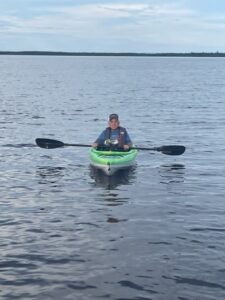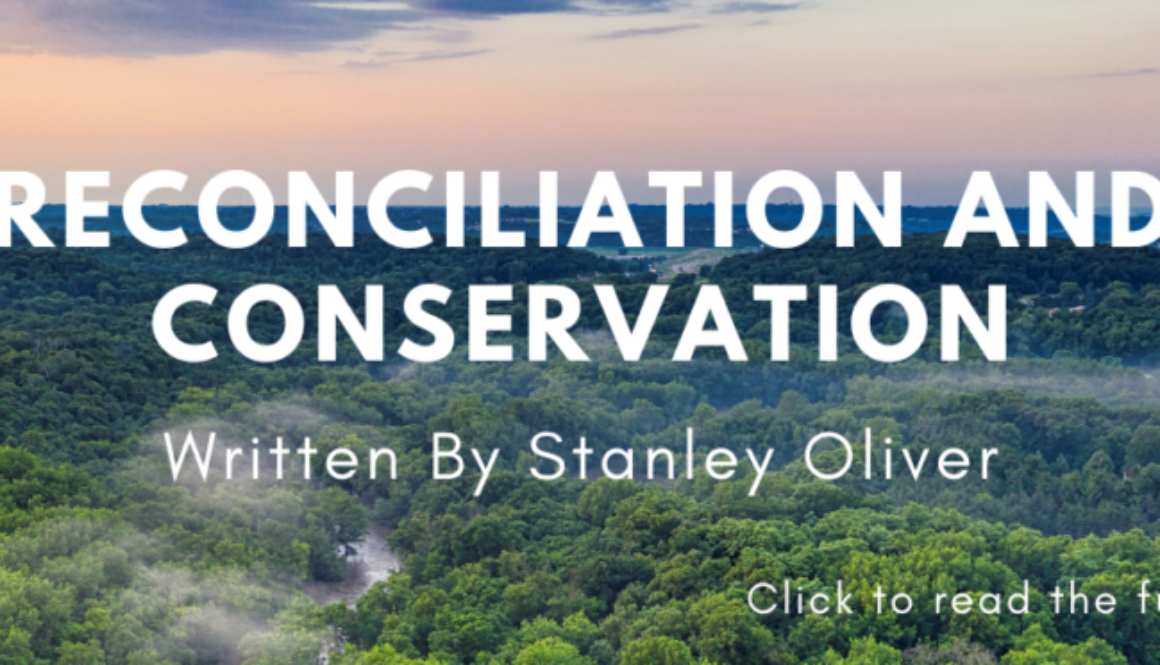Reconciliation and Conservation
Written by Stanley Oliver
Reconciliation has become a topic of interest at many tables, including Protection and Conservation. It is a very powerful word and can arouse a lot of sentiment and sometimes even debate. But what does it really mean in terms of Conservation? Well-reconciliation can mean different things to different people (scientist and Indigenous). As such each group/assembly (associations with First Nations, Inuit and Metis established bodies) may wish to define what reconciliation-conservation-protection means from their perspective.
One of the saddest things and worst impact of Colonialism was the removal of Indigenous people from their-our land and waters-the very places where we continue to find our strength, identity and our inherent right and place in this world. Accordingly, true reconciliation requires a sincere discussion about conservation which includes the past and present. But reconciliation talks must also be rooted in the land and waters. It calls for a respectful relationship, that is also ingrained in the central connection to the land and waters that continues to provide healing to Indigenous people and communities.
Indigenous and local communities are inclined to thrive in terms of conservation for several reasons. Indigenous people and communities have long standing histories with their lands and waters, which have provided Indigenous families nourishment and sustenance in a very direct and intimate way since time immemorial. Indigenous people (especially our elders) have a unique relationship and understand the many uses and the values of hundreds of natural species (trees, fish, birds, insects’ rocks etc.). Some say they see the forest differently than others. This feeling/observation must be recognized, respected, and included in any government led process. There is an Inuit word “Silas” that refers to everything, the sky, the waters, and the land. Everything affects each other, everything is connected a truly holistic approach.
Indigenous leaders are now vociferously encouraging government and policy writers to not only focus on a single management topic but rather look at the function of landscapes-waters and what is important to keep in terms of whole ecosystem connectivity, how different habitats-species may be managed to complement each other?
One-way Indigenous people suggest to government, interest groups and agencies (such as the Canadian Environmental Assessment Agency) is the fundamental inclusion of Indigenous Knowledge in balance with Western Science. Indigenous and local knowledge holders continue to be a significant part of protecting the planet’s biodiversity and the overall health of all our ecosystems. I would suggest and insist that governments and scientists need to be allies with Indigenous people and communities by developing/strengthening Indigenous voices-governing bodies, including scientific assessments, recognizing territorial rights and creating collaborations between researchers and indigenous and local communities. One of the most important aspects is that governments really must respect Indigenous knowledge and values.
Officially, Webster’s Dictionary defines the term reconciliation as simply the act of the unification of parties at variance (difference), renewal of friendship after disagreement or animosity. Further to this, Webster explains that reconciliation is “the state of things that are seemingly opposite, different, and inconsistent.
Shortly after being elected as the leader of the Liberal party and defeating Stephen Harper, Prime Minister (PM) Justin Trudeau proclaimed a National Day of Reconciliation. He also pushed his Indigenous rights recognition framework and stirred debate on ending or “decolonizing” the 1876 Indian Act, which gave Ottawa control over most aspects of Indigenous life, from health and education to land development.
The Truth and Reconciliation Commission (T&RC) final report (released in 2015) of Canada chaired by Murray Sinclair describes the term reconciliation as “an ongoing process of establishing and maintaining respectful relationships. It adds that “a critical part of this prescribed process involves mending and repairing damaged trust by making well deserved apologies, providing specific ways to include Indigenous people in official processes and following through with tangible actions that demonstrate real inclusion and change.
The T&RC report further goes on to make clear that creating respectful relationships also requires the revitalization of important related Indigenous law and legal traditions/customs. It is crucially vital that all Canadians better understand how traditional Indigenous Knowledge and philosophises helps in resolving possible conflict, repairing harm, and ultimately restoring those broken relationships that can benefit and contribute to economic and environmental stability of possible natural resources development.
Indigenous people of Canada deserve better, “it can no longer be about us, without us” approach (not my quote). Hence, if we as a Canadian society want to really move forward in terms of reconciliation and conservation and it is important enough for all of us, an absolute necessity remains to have those respectful inclusion discussions and work towards and amicable reciprocal relationship.
_________________________________________
 Stanley Oliver was born and raised in Labrador. Stan is an Inuit who is an avid hunter, fisher, and outdoorsman. He currently holds the position of Manager with the Labrador Office of Indigenous & Northern Skills Trades. He holds a Diploma from Memorial University as Resource Technician, a Certified Engineering Technician with the NL Association of Engineers and numerous certificates in Indigenous Governance and Administration.
Stanley Oliver was born and raised in Labrador. Stan is an Inuit who is an avid hunter, fisher, and outdoorsman. He currently holds the position of Manager with the Labrador Office of Indigenous & Northern Skills Trades. He holds a Diploma from Memorial University as Resource Technician, a Certified Engineering Technician with the NL Association of Engineers and numerous certificates in Indigenous Governance and Administration.
His in-depth knowledge of Labrador and Indigenous rights is often requested on the local, provincial, and national level. He currently sits on the National Indigenous Advisory Committee for the Canadian Environment Assessment Agency and the NL Provincial WERAC.

